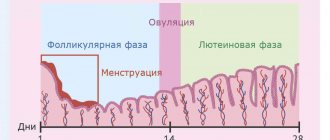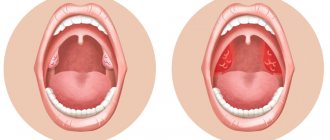Modern classification of community-acquired pneumonia:
- By pathogenesis:
a. Primary - pneumonia that developed as an independent disease
b. Secondary - pneumonia that develops against the background of another disease, such as influenza
- By localization:
a. Unilateral (left-sided and right-sided pneumonia)
b. Double-sided
- Based on the volume of tissues involved in inflammation, the following types of pulmonary pneumonia in adults and children are distinguished:
a. Focal - a small focus of inflammation (bronchopneumonia - with damage to the bronchi and respiratory sections)
b. Segmental - involving one or more segments of the lung
c. Lobar - with damage to the lobe of the lung (lobar pneumonia - with damage to the alveoli and part of the pleura)
d. Confluent - when lesions merge into larger ones
e. Total - damage to the entire lung
- Depending on the etiology and characteristics of the patient:
a.
Typical (in patients without severe immune disorders):- Bacterial
Viral pneumonia
- Fungal
- Mycobacterial
- Parasitic
b. In patients with severe immunocompromise :
- In patients with acquired immunodeficiency syndrome
- In patients with other diseases and pathological conditions
c. Aspiration pneumonia/lung abscess/pneumonia (one lung)
First signs
The first signs of pneumonia are quite nonspecific, as a result of which the disease can easily be confused with the flu or even a common cold. In any case, you should immediately think about possible pneumonia. The first symptoms will differ depending on the etiology of the disease. So, with bacterial pneumonia, the leading signs will be fever, profuse sweating, chest pain, and thick greenish-rusty sputum. Viral pneumonia is characterized by a dry cough, shortness of breath and severe general weakness. Mycoplasma pneumonia is extremely similar to them, but its onset is more subtle.
Although pneumonia is a fairly serious disease, in our time it is quite successfully treatable. At the moment, the most effective method of treatment is etiotropic therapy - for bacterial pneumonia this is antibiotics. And yet, despite the knowledge of the disease, it is necessary to consult a doctor and start treatment as early as possible in order to avoid possible complications.
Get a consultation with a general practitioner
Features of community-acquired pneumonia
Determining the pathogen is often a difficult task due to the difficulties in obtaining a substrate for diagnostics and often the lack of sufficient time for additional diagnostics. In addition, patients often develop a mixed infection.
The most common causative agent of bacterial infection (30–50% of cases) is the pneumococcus Streptococcus pneumoniae. The so-called atypical strains, undetectable by bacterioscopy and culture on conventional nutrient media, account for up to 30% of cases of the disease (Chlamydophila pneumoniae, Mycoplasma pneumoniae, Legionella pneumophila). 3–5% of cases of bacterial pneumonia are associated with rare pathogens (Haemophilus influenzae, Staphylococcus aureus, Klebsiella pneumoniae, other enterobacteria). Extremely rarely, community-acquired pneumonia can be caused by Pseudomonas aeruginosa (in the presence of bronchiectasis or in patients with cystic fibrosis).
Viral forms of CAP are caused by respiratory viruses: influenza virus, coronaviruses, rhinosyncytial virus, human metapneumovirus, human bocavirus. In most cases, respiratory viruses cause mild pneumonia with a self-limiting nature, however, in elderly and senile people, in the presence of concomitant bronchopulmonary, cardiovascular diseases or secondary immunodeficiency, the development of severe, life-threatening complications is possible.
Secondary bacterial pneumonia can be a complication of a primary viral infection of the lungs or an independent late complication of influenza.
Clinic
The main symptoms of pneumonia, which appear in both adults and children.
- Fever: occurs acutely, quickly reaches febrile levels
- Cough with copious discharge of purulent sputum; there may also be blood in the sputum (especially in the case of lobar pneumonia)
- Chest pain associated with breathing
- Shortness of breath, feeling of lack of air
- Manifestations of intoxication: severe weakness, fatigue, sweating, nausea, vomiting
- In the case of “atypical” pneumonia (Mycoplasma pneumoniae, Legionella pneumophila, Chlamydia pneumoniae, Pneumocystis jirovecii), there may be a gradual onset with a dry, unproductive cough, not without common symptoms - pain and sore throat, weakness, malaise, myalgia, headaches, pain in the abdomen - with minimal changes on the x-ray
- Elderly patients often have more severe general symptoms: drowsiness, confusion, anxiety, sleep disturbances, loss of appetite, nausea, vomiting, signs of exacerbation/decompensation of chronic diseases
Symptoms
The symptoms of pneumonia are quite characteristic and, with proper experience, it is difficult to confuse them with something else. For convenience, symptoms can be grouped into the following syndromes:
- Intoxication syndrome. Associated with the release of bacterial waste products. This may include general weakness, pain in the head and muscles of unknown origin, rapid breathing, tachycardia, pallor, loss of appetite.
- Syndrome of general inflammatory changes. This includes fever, fever, increased levels of inflammatory markers in the LBC - C-reactive protein, fibrinogen, a2-globulin. An increase in the level of leukocytes and an acceleration of ESR are also characteristic.
- Syndrome of inflammation of the lung parenchyma itself. Cough (often with sputum), dullness of percussion sound, increased vocal tremor, auscultation - moist rales in the projection of the lesion. X-ray changes are also observed - foci of infiltration, which can have a wide variety of shapes, sizes and locations. Before identifying the pathogen, it is the X-ray picture that determines the treatment tactics.
- Syndrome of damage to other organs and systems. For example, pneumonia can cause severe cardiovascular failure. The process may also involve the kidneys, digestive tract, and nervous system.
It is possible to develop atypical pneumonia, in which the symptoms are erased or absent. In this case, the determining study will be radiography or computed tomography.
Laboratory and instrumental diagnostics
Leukopenia below 3x109/l or leukocytosis above 25x109/l is considered an unfavorable prognostic sign of septic complications.
The following changes are possible in the patient's blood test:
- Leukocytosis or leukopenia
- Neutrophil shift in leukocyte formula
- Increasing ESR
- Increased acute phase reactants (CRP, fibrinogen, procalcitonin test). Other changes in the biochemical blood test may indicate decompensation in other organs and systems
Determination of arterial blood gases/pulse oximetry is performed in patients with signs of respiratory failure, massive effusion, and the development of CAP due to chronic obstructive pulmonary disease (COPD). Decrease in PaO2 below 60 mm Hg. Art. is an unfavorable prognostic sign and indicates the need to admit the patient to the intensive care unit (ICU).
A bacterioscopy of the patient's sputum is carried out to identify the pathogen, and the sputum is cultured on nutrient media to determine sensitivity to antibiotics. For severe patients, it is recommended to collect venous blood for blood cultures (2 blood samples from 2 different veins, sample volume - at least 10 ml), PCR study, serological diagnostics to identify respiratory viruses, atypical pathogens of bacterial pneumonia.
X-ray examination of the lungs usually reveals focal infiltrative changes and pleural effusion. Chest CT may be a useful alternative to radiography in a number of situations:
- In the presence of obvious clinical symptoms of pneumonia and no changes on the radiograph
- In cases where, during examination of a patient with suspected pneumonia, atypical changes are revealed (obstructive atelectasis, pulmonary infarction due to pulmonary embolism, lung abscess, etc.)
- Recurrent pneumonia, in which infiltrative changes occur in the same lobe (segment), or prolonged pneumonia, in which the duration of existence of infiltrative changes in the lung tissue exceeds 4 weeks
Fiberoptic bronchoscopy with a quantitative assessment of microbial contamination of the obtained material or other invasive diagnostics (transtracheal aspiration, transthoracic biopsy) is performed if pulmonary tuberculosis is suspected in the absence of a productive cough, as well as with bronchial obstruction by bronchogenic carcinoma or a foreign body
If the patient has pleural effusion and there are conditions for safe pleural puncture, it is necessary to conduct a study of the pleural fluid: counting leukocytes with a leukocyte formula; determination of pH, lactate dehydrogenase activity, protein content; Gram staining of smears; culture to identify aerobes, anaerobes and mycobacteria.
Bacterial pneumonia
Pneumonia (pneumonia) is an infectious disease that affects the lung tissue (alveoli). Pathology can be caused by fungi, viruses and bacteria. Bacterial pneumonia should be treated under the supervision of a physician. The “Health Clinic” on Kurskaya employs experienced specialists, has the most modern diagnostic facilities (ultrasound, CT, MRI), and the patient can undergo all the necessary diagnostics and receive a doctor’s consultation without leaving the clinic walls.
What is bacterial pneumonia?
Bacterial pneumonia is a pulmonary disease that is caused by bacteria that enter the respiratory system. The inflammatory process develops when very aggressive bacteria enter the body, which can resist the body's resistance.
Kinds
The classification of bacterial pneumonia is based on the type of pathogen:
- pneumococcal;
- streptococcal;
- staphylococcal;
- meningococcal;
- pneumonia caused by Haemophilus influenzae, Legionella, Pseudomonas aeruginosa and so on.
According to the course and clinical picture, bacterial pneumonia is divided into:
- focal (bronchopneumonia) - inflammation affects some areas of the lungs and adjacent bronchi;
- lobar (lobar) - the entire pulmonary lobe will be involved in the inflammatory process. In most cases, the lower parts of the lung are affected.
Pneumonia can be:
- one-sided;
- two-sided;
- if the pleural cavity is affected, it is said to be pleuropneumonia.
According to pathogenetics, bacterial pneumonia can be:
- community-acquired;
- hospital-acquired - the infection develops 2-3 days after the patient’s admission to the hospital.
The course of bacterial pneumonia can be:
- lung;
- average;
- severe course.
Causes
The bacteria that cause pneumonia are part of the respiratory tract, that is, they are opportunistic microflora. When the immune system works well, these bacteria do not harm the body in any way. With weakened immunity, they become dangerous.
Risk factors:
influenza, ARVI;- smoking and other bad habits;
- avitaminosis;
- overwork and stress;
- age over 70 years;
- unfavorable environmental situation;
- COPD;
- diabetes;
- sinusitis;
- cardiac pathologies.
Symptoms and signs
Typical manifestations of bacterial pneumonia are:
- increased body temperature;
- sweating, chills;
- cough with copious greenish sputum;
- pain in the sternum, especially with deep breathing;
- weakness, headache, myalgia;
- pallor;
- low blood pressure, increased heart rate;
- shortness of breath, rapid breathing, wheezing.
Diagnostics
The doctor examines the patient, learns about the symptoms, and then prescribes laboratory tests of blood, urine, and sputum.
Instrumental diagnostic procedures include:
- radiography;
- ;
- MRI.
All procedures can be completed in our clinic, which is equipped with the latest generation diagnostic equipment.
Which doctor treats you?
A pulmonologist treats bacterial pneumonia. At the Health Clinic on Kurskaya, specialists are available to help you develop the right treatment.
Treatment methods
In mild forms of the disease, treatment is carried out at home under the supervision of a doctor; severe forms are a reason for hospitalization of the patient.
The patient is prescribed bed rest, drinking plenty of fluids, and the main treatment is antibiotics. Only a doctor can select a drug based on test results. As a rule, penicillins, macrolides or cephalosporins are prescribed. These are broad-spectrum antibiotics. In some cases, the doctor selects highly targeted medications. Medicines are taken orally or intramuscularly. In severe cases, intravenous injections are indicated.
As a supplement, the following is prescribed:
- antipyretics;
- vitamins;
- expectorants;
- short courses of hormonal therapy;
- oxygen therapy.
results
With timely and competent treatment, the prognosis is favorable.
Rehabilitation and lifestyle restoration
After the patient's condition begins to improve, the doctor adds:
- massage;
- physiotherapy;
- exercise therapy;
- breathing exercises;
- recommends sanatorium rehabilitation.
Lifestyle with bacterial pneumonia
The recommended lifestyle for bacterial pneumonia is as follows:
- healthy eating;
- sufficient amount of protein food;
- sufficient drinking regime;
- inclusion of vegetables and fruits in the diet;
- introduction of Omega-3 fatty acids into the diet - found in fatty fish, nuts, and vegetable oils;
- excluding smoking and alcohol.
As a preventative measure, it is recommended to strengthen the immune system and maintain a healthy lifestyle. Without treatment, bacterial pneumonia can lead to dangerous complications - chronic bronchitis, bronchial asthma, pulmonary infarction, pleurisy, pyopneumothorax, respiratory failure.
| Name of service | Price in rubles | Price until 19.12. |
| CT scan of the chest | 4 990 | 2 790 |
If you do not find a service in the price list, please call us and we will provide you with the necessary information.
Our doctors will help you:
General practitioner, immunologist
Zhemchugov Vladislav Evgenievich
Treatment
It is fundamentally important to determine the patient’s management tactics - whether he should be hospitalized or whether treatment can be carried out on an outpatient basis. For these purposes, you can use the CURB-65/CRB-65 scale, which involves assessing a number of indicators (presence - 1 point, absence - 0):
C —impaired consciousness
U - blood urea nitrogen more than 7 mmol/l (not taken into account in CRB-65)
R — respiratory rate ≥ 30 per minute.
B - systolic blood pressure < 90 mm Hg or diastolic blood pressure < 60 mm Hg. Art.
65 - age 65 years and older
Explanation:
0 points - the patient belongs to group I (mortality 1.2%) and is treated on an outpatient basis.
1–2 points correspond to group II (mortality 8.15%), patients in this group are subject to hospitalization with observation and dynamic assessment of the condition.
3 points and above - patients are subject to emergency hospitalization; mortality in this group can reach 31%.
Management of patients with CAP in outpatient settings
For mild pneumonia, antibacterial treatment of adults and children can be completed with stable normalization of body temperature for 3–4 days (total course duration 7–10 days). If there is clinical/epidemiological evidence of mycoplasma or chlamydial infection, the duration of therapy should be 14 days. An initial assessment of the effectiveness of therapy should be carried out 48–72 hours after the end of the course of treatment (re-examination). If symptoms persist or progress, it is necessary to reconsider the tactics of antibacterial therapy and re-evaluate the advisability of hospitalization.
According to the recommendations of the Russian Respiratory Society, outpatient patients are divided into 2 groups, differing in etiological structure and tactics of antibacterial therapy (see Table 1. Antibacterial therapy of CAP in outpatients):
Table 1.
Antibacterial therapy of CAP in outpatients
| Group | Most common pathogens | Drugs of choice | Alternative drugs | Patient characteristics |
| Mild CAP in patients under 60 years of age without concomitant pathology | S. pneumoniae M. pneumoniae C. pneumoniae H. influenzae | Amoxicillin orally or macrolides (azithromycin, clarithromycin) orally | Respiratory fluoroquinolones (levofloxacin, moxifloxacin) orally | |
| Mild CAP in patients over 60 years of age and/or with signs of concomitant pathology | S. pneumoniae C. pneumoniae H. influenzae S. aureus Enterobacteriaceae | Amoxicillin + clavulanic acid or Amoxicillin + sulbactam orally | Respiratory fluoroquinolones (levofloxacin, moxifloxacin) orally | Concomitant diseases affecting etiology and prognosis: COPD, diabetes, congestive heart failure, liver cirrhosis, alcohol abuse, drug addiction, exhaustion |
Management of patients with CAP in a hospital setting
It is advisable to begin therapy for pneumonia in hospitalized patients with parenteral antibiotics. After 3–4 days, provided the temperature normalizes, intoxication and other symptoms decrease, it is possible to switch to oral forms of antibiotics until the course of treatment is completed (step-down therapy). Antibacterial drugs can be used both as part of combination therapy and as monotherapy. More detailed treatment regimens for CAP are presented in Table No. 2.
Table 2.
Treatment regimens for CAP depending on the course
| Group | Most common pathogens | Recommended treatment regimens | |
| Drugs of choice | Alternative drugs | ||
| EP of non-severe course | S. pneumoniae H. influenzae C. pneumoniae S. aureus Enterobacteriaceae | Benzylpenicillin IV, IM ± macrolide (clarithromycin, azithromycin) orally, or Ampicillin IV, IM ± macrolide orally, or Amoxicillin + clavulanic acid IV ± macrolide orally, or Cefuroxime IV, IV m ± macrolide orally, or Cefotaxime IV, IM ± macrolide orally, or Ceftriaxone IV, IM ± macrolide orally | Respiratory fluoroquinolones (levofloxacin, moxifloxacin) IV Azithromycin IV |
| Severe EP | S. pneumoniae Legionella spp. S. aureus Enterobacteriaceae | Amoxicillin + clavulanic acid IV + macrolide IV, or Cefotaxime IV + macrolide IV, or Ceftriaxone IV + macrolide IV | Respiratory fluoroquinolones (levofloxacin, moxifloxacin) IV + III generation cephalosporins IV |
Note:
- If the presence of “atypical” pneumonia is suspected, the use of macrolides is indicated.
- If there is a risk of infection with P. aeruginosa (bronchiectasis, use of corticosteroids, therapy with broad-spectrum antibiotics for more than 7 days during the last month, exhaustion), the drugs of choice are ceftazidime, cefepime, cefoperazone + sulbactam, meropenem, imipenem, piperacillin/tazobactam, ciprofloxacin, in monotherapy or in combination with aminoglycosides of the II–III generation.
- If aspiration is suspected, the following treatment options are indicated: cefoperazone + sulbactam, ticarcillin + clavulanic acid, carbapenems, piperacillin/tazobactam.
An initial assessment of the effectiveness of antibacterial therapy should be carried out 24–48 hours after the start of treatment. If signs of pneumonia persist in adults or children, treatment tactics should be reconsidered.
For mild CAP, the course of antibiotic therapy is about 7–10 days. For severe CAP of unspecified etiology, a 10-day course of antibiotic therapy is recommended. If there is evidence of mycoplasma or chlamydial etiology, therapy should last 14 days; in the case of CAP caused by staphylococci, gram-negative enterobacteria, legionella, the duration of therapy is 14–21 days.
In addition to antibiotics, the following are used in the treatment of CAP:
- Antiviral therapy: neuraminidase inhibitors (oseltamivir, zanamivir), active against influenza A and B viruses. Duration of use is 5–10 days.
- Mucolytics and expectorants - tablet or inhalation forms.
- Glucocorticosteroids: used for developed septic shock (hydrocortisone 200–300 mg/day for no more than 7 days).
- Oxygen therapy for PaO2 < 55 mm Hg. Art. or SpO2 < 88% (breathing air). It is optimal to maintain SpO2 within 88–95% or PaO2 within 55–80 mm Hg. Art.
- Infusion therapy - to correct hypovolemia.
- Low molecular weight heparins for the prevention of thromboembolism in severe patients.
- Physiotherapy and exercise therapy to reduce inflammation and improve sputum discharge.
Basics of antibacterial therapy for community-acquired pneumonia in elderly patients
What pathogens of pneumonia are most common in older people? What are the principles for choosing antibiotics in older people?
An important risk factor for the development of acute pneumonia is old age, which is of particular importance due to increasing life expectancy in developed countries. Pneumonia in elderly and senile people poses a serious problem due to its significant frequency, difficulties in diagnosis and treatment, and high mortality. In the age group over 60 years, the incidence of pneumonia ranges from 20 to 40 cases per 1000 population. In Moscow, the prevalence of community-acquired pneumonia among elderly and senile people is 17.4 per 1000. In recent years, there has been a trend toward an increase in mortality from pneumonia; in the mid-90s it reached 18 per 100 thousand population.
Pneumonia in people over 60 years of age usually develops in conditions of anatomically altered pulmonary parenchyma, impaired ventilation and perfusion. Age-related changes in many organs and tissues determine a decrease in the human body’s ability to prevent the penetration of pathogenic microorganisms and resist the development of the infectious process.
In older people, an infectious disease is often characterized by scant clinical symptoms: no acute onset, mild febrile reaction, moderate changes in the leukocyte formula. Sometimes the infection in such patients proceeds atypically and can be clinically manifested by symptoms of the central nervous system (lethargy, drowsiness, weakness, impaired consciousness, mental changes, headache, dizziness, etc.), sudden onset or progression of respiratory, cardiac or renal failure.
One of the features of elderly and senile patients is the presence of two or more concomitant diseases, which, affecting both the pathogenesis of pneumonia and the pharmacokinetics of drugs, aggravate the course of the infectious process and increase the likelihood of complications. In 80-90% of elderly patients, the most common conditions are heart failure, chronic obstructive pulmonary diseases, neurological vascular diseases, diabetes mellitus, chronic renal failure, liver diseases, and tumors.
The choice of antibacterial therapy for pneumonia, as a rule, should be based on the etiological principle, which may include the community-acquired and nosocomial nature of pneumonia, the presence and specificity of the background pathology, the epidemiological situation, and the characteristics of the clinical and radiological situation. The most common causative agent of community-acquired pneumonia, including in the elderly, remains S. pneumoniae, which accounts for 30% or more of cases of the disease. However, in elderly patients, the role of gram-negative microorganisms increases, such as H. influenzae (8–25%), E. coli, Рoteus spp., Kl. pneumoniae The development of non-severe pneumonia in people over 60 years of age is most often associated with infection with S. pneumoniae, H. influenzae and aerobic gram-negative microorganisms. The etiological structure of severe community-acquired pneumonia is dominated by S. aureus, P. aeruginosa, L. pneumophila and K. pneumoniae.
In practical medicine, it is not always possible to identify the causative agent of pneumonia due to the absence of a productive cough in 30-35% of patients (and more than 50% in the elderly) in the early stages of the disease and the significant duration of traditional microbiological studies. Thus, the main approach in the treatment of community-acquired pneumonia in the elderly is the empirical choice of antibacterial agents.
Treatment for elderly and senile people is associated with significant difficulties. The basic principle of drug therapy in geriatrics should be the use of only necessary drugs that are most effective with minimal side effects. At the same time, in addition to drug therapy for pneumonia and its complications, people over 60 years of age often need to take medications to treat concomitant diseases. Despite the fact that polytherapy can lead to an increase in the frequency of side effects, discontinuation of antiarrhythmic, coronary and some other drugs is often impossible. Polyprogrammacy should be perceived as a feature characteristic of old age.
With age, the pharmacokinetics of drugs changes, which may lead to changes in pharmacodynamic effects. An age-related decrease in the penetration of drugs into tissues as a result of a decrease in the volume of distribution and a decrease in the level of tissue blood flow may be one of the reasons for the insufficient clinical and bacteriological effectiveness of antibiotics in elderly patients. With age, the level of drug metabolism in the liver decreases as a result of decreases in liver mass, hepatic blood flow, and microsomal enzyme activity, which leads to decreased clearance and increased serum concentrations of those antibacterial agents that are primarily metabolized in the liver. As a result of atrophy of the renal cortex, the level of glomerular filtration decreases with age. In elderly patients, the excretion of many drugs slows down, which leads to an increase in their concentration in the blood. It is advisable to adjust the doses of antibacterial drugs that have a predominantly renal elimination route in elderly patients depending on the individual glomerular filtration rate. This is especially important for potentially toxic drugs such as aminoglycosides, vancomycin, carbenicillin, ticarcillin, tetracyclines.
Antibacterial therapy should be early and adequate in dose, route of administration and duration of use, as well as adjusted during treatment depending on the clinical effect. The effectiveness of treatment primarily depends on the correct choice of antibacterial drug and its compliance with the etiology of the disease. In addition, it is necessary to know about the presence and possibility of antibiotic resistance in this situation, take into account the severity of pneumonia, the functional state of the liver or kidneys and the risk of side effects.
The severity of pneumonia is also one of the clinical guidelines in choosing the initial antibacterial drug and routes of its administration. When prescribing antibacterial therapy, it is necessary to take into account the possible side effects of drugs and avoid prescribing drugs that can cause undesirable effects and worsen the course of the underlying and concomitant diseases. It is not recommended to use antibiotics with a bacteriostatic effect (tetracyclines, chloramphenicol, sulfonamides), since due to a decrease in the defenses of the elderly body when treated with these drugs, there is a high probability of an incomplete bacteriological effect, which increases the risk of recurrent infection and chronicity of the infectious process. In addition, when using bacteriostatics, there is an increased risk of selection of resistant strains of microorganisms and the development of superinfection.
Available experience suggests that in Russia, severe community-acquired pneumonia in the elderly is often treated with combinations of β-lactams and aminoglycosides, which cannot be considered sufficiently substantiated. Aminoglycoside antibiotics are not active against pneumococci and atypical pathogens, and have little activity against staphylococci. Arguments in favor of such a combination usually refer to the possibility of expanding the spectrum of action of the combination, the manifestation of synergism and overcoming possible resistance. However, the idea of a high degree of synergy between beta-lactams and aminoglycosides is somewhat exaggerated, since this combination does not lead to an enhanced clinical effect. Resistance of gram-negative microorganisms to third-generation cephalosporins is now almost always associated with resistance to gentamicin and tobramycin (particularly in Moscow). In addition, the use of aminoglycosides should be accompanied by monitoring of renal function and hearing.
In our country, for many years, intramuscular injection of penicillin was used in the empirical treatment of pneumonia, however, a change in the spectrum of pathogens with a fairly high proportion of Haemophilus influenzae, mycoplasma and other bacteria insensitive to penicillin dictates a change in the tactics of antibacterial therapy. The emergence of penicillin-resistant strains of pneumococcus, as well as the need to administer penicillin every 3-4 hours, requires a change in the first-line drug for the treatment of outpatient pneumonia.
For people over 60 years of age, broad-spectrum antibiotics are more often used. This is justified due to the polyetiological nature of pneumonia in this population and the widespread occurrence of associations of gram-positive and gram-negative microorganisms. Oral administration of drugs has a number of undoubted advantages over parenteral administration - in particular, it is safer, simpler and cheaper. Preference should be given to agents with various forms of administration using a “stepped” therapy regimen.
In the vast majority of cases, it is necessary to prefer monotherapy, the advantages of which are to reduce the risk of inadequate interaction of antibacterial drugs, unwanted interactions with other drugs, the risk of developing toxic effects, to facilitate the work of medical staff, and to reduce the cost of treatment.
In order to optimize antibacterial therapy, based on multicenter studies, numerous algorithms for the treatment of community-acquired pneumonia in elderly patients have been proposed. Thus, S.V. Yakovlev (1999) offers a differentiated approach to the treatment of elderly patients, dividing them into groups. For outpatients without concomitant pathology, the drugs of choice are: amoxicillin/clavulanic acid orally and cefuroxime axetil, as alternatives - amoxicillin, ampicillin, doxycycline and grepafloxacin. For outpatients with concomitant pathologies - ceftriaxone and grepafloxacin. Amoxicillin/clavulanic acid and fluoroquinolones (ciprofloxacin and ofloxacin) are alternatives in this category of patients. In hospitalized patients with mild and uncomplicated pneumonia, the first-line drugs are cefuroxime or amoxicillin/clavulanate intravenously. Alternatives are grepafloxacin, third-generation cephalosporins (cefotaxime or ceftriaxone) intravenously, doxycycline. In hospitalized patients with severe cases - 3rd generation cephalosporins intravenously + macrolide intravenously. As an alternative, intravenous fluoroquinolones may be used in this group.
In October 1998, at the VIII National Congress on Respiratory Diseases (Moscow), recommendations for antibiotic therapy in adults were presented, developed by the Commission on Antibacterial Policy under the Ministry of Health of the Russian Federation and the Russian Academy of Medical Sciences, according to which for patients with pneumonia aged 60 years and older and with concomitant diseases, “protected” aminopenicillins (ampicillin/sulbactam, amoxicillin/clavulanate) or second-generation celafosporins (cefuroxime-axetine) are recommended as the means of choice. Given the likelihood of chlamydial or Legionella infection in this group of patients, combination treatment with macrolide antibiotics seems justified.
In severe community-acquired pneumonia, including in elderly patients, the drugs of choice are parenterally administered third-generation cephalosporins (cefotaxime or ceftriaxone) in combination with macrolides for parenteral administration (erythromycin, spiramycin). The above combination covers almost the entire spectrum of potential etiological agents of severe community-acquired pneumonia - both “typical” and “atypical”.
In the Federal Guide for Physicians on the Use of Medicines (Formulary System) of 2000, in the section “Antimicrobials”, amoxicillin/clavulanate or cephalosporins of II-III generation + macrolide are recommended for the treatment of community-acquired pneumonia in patients over 60 years of age and with concomitant diseases. For clinically severe pneumonia: benzylpenicillin + parenteral macrolide, cefotaxime or ceftriaxone + parenteral macrolide, fluoroquinolones. For abscess pneumonia - ampicillin/sulbactam or amoxicillin/clavulanate, lincosamide + II-III generation celafosporins (or fluoroquinolones), imipenem or meropenem.
These recommendations mainly list groups of drugs (for example, third generation cephalosporins, macrolides, etc.) without specifying the characteristics of individual drugs within the group and without taking into account various clinical, pharmacokinetic and pharmacoeconomic indicators. Without compromising clinical effectiveness, taking into account the characteristic features in each group, it is possible to identify the most optimal drugs for the treatment of community-acquired pneumonia. Thus, from the third generation cephalosporins - ceftriaxone (long half-life), from macrolides - spiramycin (parenteral and oral forms of administration), from lincosamides - clindamycin (more active and safer than lincomycin and is better absorbed when taken orally). Of the fluoroquinolones, new fluoroquinolones (moxifloxacin, levofloxacin) are preferable, since ciprofloxacin, pefloxacin and ofloxacin are characterized by reduced activity against pneumococci. It is advisable to use carbapenems as drugs of choice in cases that threaten the patient’s life, as well as as reserve drugs when previous antibacterial therapy is ineffective.
An adequate choice of the initial antibacterial drug has not only clinical significance. Here it is also impossible not to take into account economic aspects, especially in elderly patients, since an error in choice itself entails economic losses.
Currently, the issue of the cost of effective therapy is becoming increasingly relevant. Approximately 60% of patients over 65 years of age belong to the preferential category of the population, entitled to free (or with a 50% discount) purchase of medications. Therefore, the question of the right choice from the point of view of pharmacoeconomics and cost-effective selection of a drug for the treatment of an elderly person acquires not only a medical, but also a social nature.
Thus, the basis for the treatment of pneumonia is adequate antimicrobial therapy: taking into account the compliance of the prescribed antibacterial agent with the isolated or suspected pathogen; optimal dosage; optimization of drug administration routes; taking into account complications of the disease and concomitant pathologies; prevention of possible side effects from the use of drugs; reasonable duration of treatment; accounting for the cost of the drug.
Literature
1. Alekseev V. G., Yakovlev V. N. Essays on clinical pulmonology. M., 1998. P. 176. 2. Antibacterial therapy of pneumonia in adults. Educational method. manual for doctors. M.: RM-Vesti. 1998. P. 28. 3. Dvoretsky L. I. Pneumonia in elderly and senile patients. M. RMJ. 1998, vol. 6. No. 21. pp. 1364-1372. 4. Dvoretsky L. I., Lazebnik L. B., Yakovlev S. V. Diagnosis and treatment of bacterial infections in the elderly // M.: Universum Publishing, 1997. P. 54. 5. Nonikov V. E. Pneumonia in the elderly and old age // M. Zh. Clinical. gerontol. / 1995, No. 1. P. 9-13. 6. Federal guidelines for doctors on the use of medicines (formulary system). Section 5: “Antimicrobial agents” / M. 2000. 7. Yakovlev S. V. Community-acquired pneumonia in the elderly: features of etiology, clinical course and antibacterial therapy. M.: RMZh. vol. 7, no. 16. pp. 763-768.
Note!
- Pneumonia in people over 60 years of age usually develops in conditions of anatomically altered pulmonary parenchyma, impaired ventilation and perfusion
- The basic principle of drug therapy in geriatrics should be the use of only necessary drugs that are most effective with minimal side effects
- Antibacterial therapy should be early and adequate in dose, route of administration and duration of use
- The severity of pneumonia is also one of the clinical guidelines in choosing the initial antibacterial drug and routes of its administration
- In the vast majority of cases, preference is given to monotherapy
* In Russia it is produced under the trade name Cefosin®
** In Russia it is produced under the trade name Sultasin®










